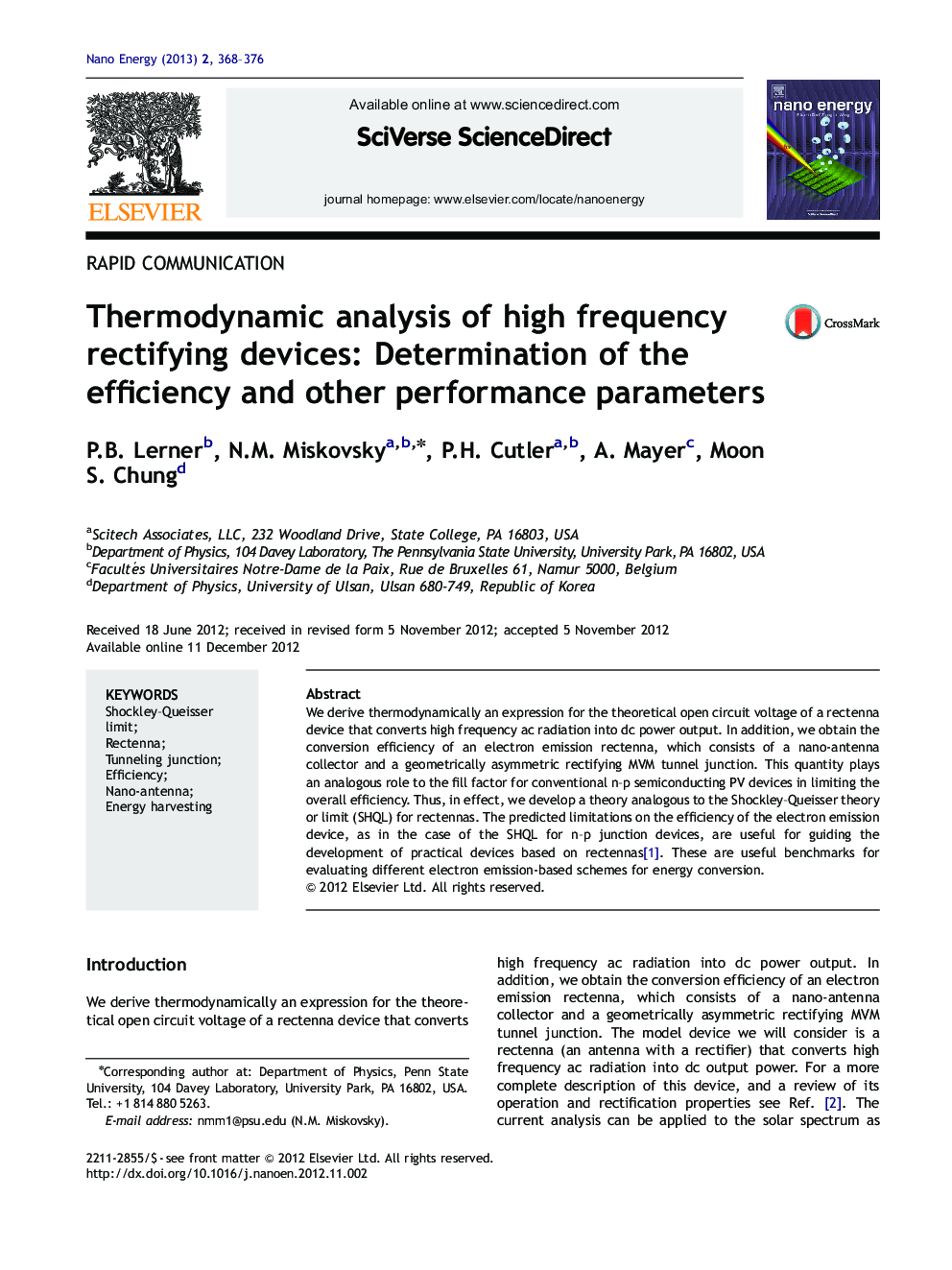| Article ID | Journal | Published Year | Pages | File Type |
|---|---|---|---|---|
| 1558214 | Nano Energy | 2013 | 9 Pages |
We derive thermodynamically an expression for the theoretical open circuit voltage of a rectenna device that converts high frequency ac radiation into dc power output. In addition, we obtain the conversion efficiency of an electron emission rectenna, which consists of a nano-antenna collector and a geometrically asymmetric rectifying MVM tunnel junction. This quantity plays an analogous role to the fill factor for conventional n–p semiconducting PV devices in limiting the overall efficiency. Thus, in effect, we develop a theory analogous to the Shockley–Queisser theory or limit (SHQL) for rectennas. The predicted limitations on the efficiency of the electron emission device, as in the case of the SHQL for n–p junction devices, are useful for guiding the development of practical devices based on rectennas[1]. These are useful benchmarks for evaluating different electron emission-based schemes for energy conversion.
Graphical abstractEnergy Conversion Efficiency vs barrier transparency,b, for rectennas with point-contact rectifiers.Figure optionsDownload full-size imageDownload as PowerPoint slideHighlights► We calculate the conversion efficiency for rectennas consisting of a nano-antenna with a geometrically asymmetric, rectifying point-contact junction. ► These efficiencies constitute a limit for rectennas, analogous to the Shockley–Queisser limit for n–p cells of about 37%. ► Efficiencies exceeding 70% can be expected for the optimized rectenna device.
